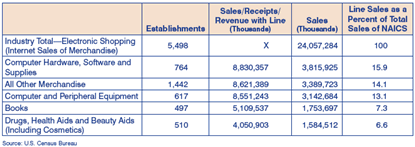Retail Sales and the Elusive Internet Shopping Industry
American consumers will have spent about $460 billion this past holiday shopping season, according to the Purdue Retail Institute. To put this figure into perspective, that is a little more than the nation of Liberia's gross domestic product. If you want a perspective a little closer to home, that figure is inching close to the gross state product of Illinois.
Traditional in-store sales still dominate the retail industry, despite all the media attention to holiday shopping on the Internet. The Purdue Retail Institute estimates that “Internet sales will climb to $26 billion, up from $21 billion last year (a 22 percent increase). While a 22 percent increase is notable, Internet sales still account for only 10 percent of holiday sales.” Again, to put this figure of $26 billion into perspective, that amount is close to Indiana's budget for the last two years.
A private research firm, comScore Networks, forecasted similar fourth quarter Internet sales ($26.5 billion) and predicts that online spending for 2005 will be around $83 billion—a 24 percent increase over 2004.
The most recent Census Bureau data for the nation on e-commerce comes from the Monthly Retail Trade Survey and is for the third quarter of 2005. Going into the holiday season, there were $962.7 billion in retail sales, and e-commerce sales comprised 2.2 percent of total sales. Gradually, e‑commerce sales have taken a larger piece of the pie thanks to annual growths rates that are three times in-store retailers (see Table 1).
Table 1: Estimated Quarterly U.S. Retail Sales: Total and E-Commerce* Not Adjusted
Although the material is dated, we can get fairly detailed information on shopping via the Internet using the 2002 Economic Census. In 2002, 5,498 businesses with paid employees generated $24 billion in Internet sales, excluding electronic auctions, which is now close to the amount that is generated by online shopping on a quarterly basis.
Note that businesses with a combination of in-store sales and Internet sales are not included. For example, goods sold online at Sam's Club, Best Buy and car dealerships would be excluded.
Table 2 shows the nation's top five product lines by Internet sales. Computer hardware, software and supplies comprised almost 16 percent of Internet sales in the nation. In addition, there were 95 electronic auctions like eBay, which posted $903 million in sales. Since 1997, there are 5,920 more electronic shopping and mail-order businesses with an additional $52 billion in sales or a 75 percent increase.
Table 2: Top 5 Product Lines in the U.S. by Electronic Shopping (Internet Sales), 2002
E-commerce in Indiana
While U.S. retailers generated over $3 trillion in sales in 2002, Indiana retailers generated $67 billion. In Indiana and the United States, 26 percent of retailers' revenue comes from motor vehicle and parts dealers, and anyone who has had to purchase a car or take one in for repairs lately knows the truth in that. In Indiana, general merchandise store sales (department stores, warehouse clubs, super-centers and the like) comprise 17 percent of total sales and beat out food and beverage store sales, which assumes the second place for the nation.
So we know the magnitude of the retail trade industry, but is it possible to measure e-commerce within the state?
In 2002, Indiana had 92 establishments with paid employees engaged in retailing merchandise using the Internet and one electronic auction business. On a broader scope, in 2003, 1,082 businesses with no paid employees had $24 million in sales in the mail order and electronic shopping industry group. That is a gain of about 200 businesses.
Figure 1 shows volatility in nonstore retailers' growth in both Indiana and the nation over the past fifteen years. However, where the United States has averaged a gain of 240 businesses each year, Indiana has lost 14. Indiana's slow slide in nonstore retailers, which can be seen in Figure 2, is partly due to the decline in the number of mail-order houses and, because of the break in the time series with this industry, it is difficult to capture the remainder. On a brighter side, Indiana has outstripped the nation in the growth of electronic shopping retailers over the past two years (see Figure 3). The state gained 18 electronic shopping retailers, bringing the total to 68.
Figure 1: Nonstore Retail Establishments Percent Change, First Quarter
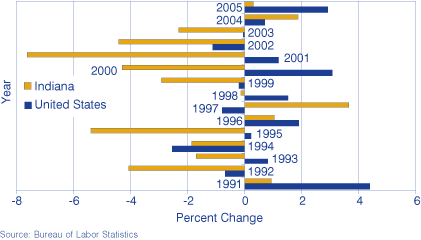
Figure 2: Number of Nonstore Retailers in Indiana
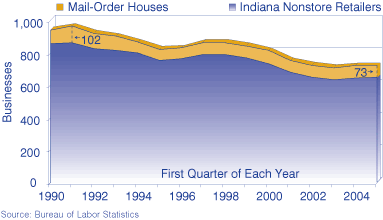
Figure 3: Percent Change in Electronic Shopping Establishments
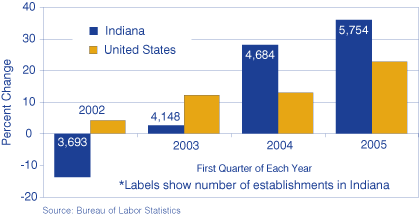
Figure 4 examines nonstore retailers' sales on a per capita basis, which is a way of comparing sales volume for this industry across counties. However, these figures do not just reflect the online and mail-order spending of the county populace because online shopping and mail-orders can cross county and state lines.
Figure 4: Nonstore Retailers' Per Capita Sales, 2002
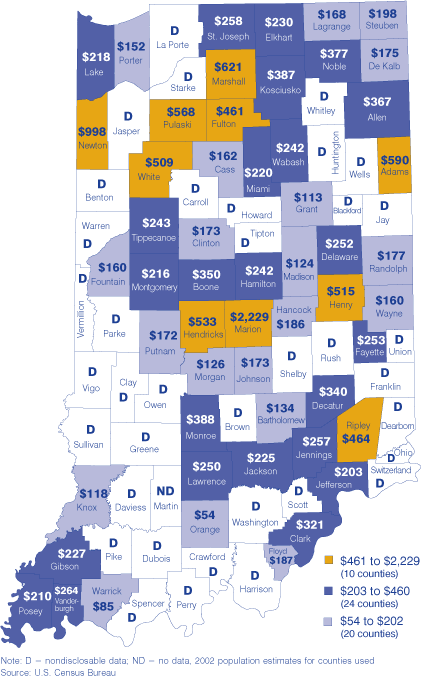
The National Retail Federation found that “the average consumer plans to spend $738.11 this holiday season, up 5.1 percent from the previous year and while debit cards will be the most popular form of payment this holiday season, cash will replace credit cards as the second most popular method of payment.” It isn't too surprising that consumers were a little more conscious of taking on more debt given that consumers had a larger debt ratio heading into the holiday season than recent previous third quarters, plus the expectation of higher gas prices (see Figure 5).
Figure 5: U.S. Household Debt as a Percent of Disposable Income
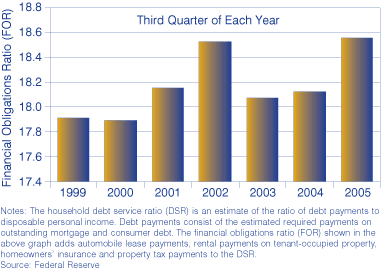
Notes
- http://news.uns.purdue.edu/html4ever/2005/051117.T.Feinberg.shop05.html
- comScore online spending forecasts are for non-travel and electronic auctions and large corporate spending are excluded; press release at www.comscore.com/press/pr.asp 12/4/2005.
- The Monthly Retail Trade Survey includes only retail firms. It excludes non-retail operations, such as travel agencies, financial services, manufacturers and wholesalers.
- National Retail Federation information available at www.nrf.com/content/default.asp?folder=press/release2005&file=holiday1105.htm&bhcp=1 and www.nrf.com/content/default.asp?folder=press/release2005&file=holiday1005.htm&bhcp=1
Amber Kostelac, Data Manager
Indiana Business Research
Center, Kelley School of Business, Indiana University


